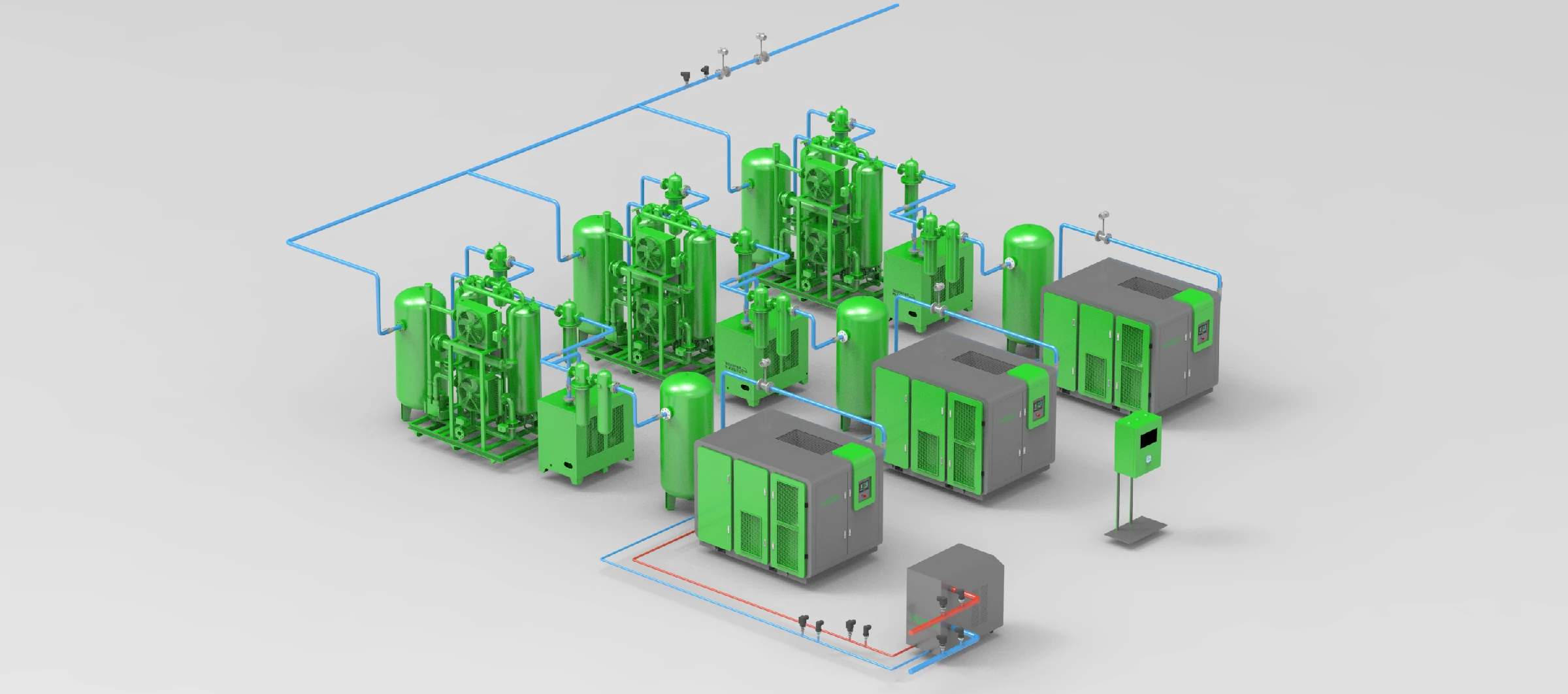Introduction
Rotary screw compressors have become the backbone of modern industrial operations, delivering reliable compressed air solutions for manufacturing, construction, and automotive industries. Known for their energy efficiency, durability, and ability to seize air effectively, these compressors outperform traditional piston models in heavy-duty applications. In this comprehensive guide, we’ll explore how rotary screw compressors work, their advantages, common challenges like seized air components, and best practices for maintenance.
1. What Is a Rotary Screw Compressor?
A rotary screw compressor is a type of gas compressor that uses twin helical screws (rotors) to pressurize air. As the rotors intermesh, they reduce the volume of incoming air, creating high-pressure output. Key components include:
- Air inlet valve
- Male and female rotors
- Oil injection system (in oil-flooded models)
- Cooling system
- Air/oil separator
Unlike reciprocating compressors, rotary screw models provide continuous airflow, making them ideal for applications requiring non-stop operation.
2. How Rotary Screw Compressors Seize Air Efficiently
The term “seize air” refers to the compressor’s ability to trap and compress air with minimal energy loss. Here’s how it works:
- Air Intake: Ambient air enters through the inlet valve.
- Compression: The rotating screws progressively reduce air volume, increasing pressure.
- Oil Injection (optional): In oil-flooded compressors, oil cools the system and seals gaps between rotors.
- Discharge: Compressed air exits into storage tanks or directly to equipment.
This process ensures consistent pressure levels, critical for pneumatic tools, HVAC systems, and automated machinery.
3. Key Advantages of Rotary Screw Compressors
3.1 Energy Efficiency
Rotary screw compressors consume up to 30% less energy than piston compressors. Variable Speed Drive (VSD) models adjust motor speed to match demand, reducing idle time.
3.2 Low Maintenance
With fewer moving parts than reciprocating compressors, screw compressors require minimal upkeep. Regular oil changes and filter replacements prevent issues like seized air components due to contamination.
3.3 Quiet Operation
Enclosed rotors and advanced sound-dampening materials make these compressors ideal for noise-sensitive environments.
3.4 High Air Quality
Oil-free rotary screw compressors deliver 100% contaminant-free air, critical for food processing, pharmaceuticals, and electronics manufacturing.
4. Common Applications of Rotary Screw Compressors
- Manufacturing: Powering assembly lines, CNC machines, and robotics.
- Construction: Operating jackhammers, sandblasters, and paint sprayers.
- Agriculture: Running dairy machines and crop sprayers.
- Healthcare: Supplying clean air for ventilators and dental tools.
Their ability to seize air without pulsations makes them indispensable in precision-driven industries.
5. Preventing Seized Air Systems: Maintenance Tips
A seized air compressor often results from poor lubrication, overheating, or contaminants. Follow these steps to avoid downtime:
- Monitor Oil Levels: Check oil quality and replace it per the manufacturer’s schedule.
- Clean Filters: Clogged air filters force the compressor to work harder, raising temperatures.
- Inspect Rotors: Misaligned rotors can grind and seize; schedule annual alignment checks.
- Manage Moisture: Use aftercoolers and dryers to prevent corrosion in air lines.
Proactive maintenance extends the compressor’s lifespan by up to 50%.
6. Oil-Flooded vs. Oil-Free Screw Compressors
| Feature | Oil-Flooded | Oil-Free |
|---|---|---|
| Air Purity | Requires filtration | 100% contaminant-free |
| Maintenance | Regular oil changes | Minimal |
| Cost | Lower upfront cost | Higher initial investment |
| Applications | Automotive, general industry | Food, pharma, electronics |
7. Choosing the Right Compressor
Consider these factors:
- Air Demand (CFM): Calculate your facility’s peak airflow needs.
- Pressure Requirements: Most industries operate at 100–125 PSI.
- Energy Efficiency: Opt for VSD models if demand fluctuates.
- Space Constraints: Compact designs save floor space.
8. Future Trends in Rotary Screw Compressor Technology
- IoT Integration: Sensors monitor performance and predict failures.
- Sustainable Designs: Eco-friendly refrigerants and recyclable materials.
- Hybrid Systems: Combining screw compressors with energy storage units.
Conclusion
Rotary screw compressors offer unmatched reliability and efficiency for industrial applications. By understanding their operation, addressing challenges like seized air systems, and investing in routine maintenance, businesses can maximize ROI and avoid costly downtime. Whether you’re upgrading an existing system or installing a new one, prioritize models that align with your airflow needs and sustainability goals.
 Английский
Английский
 Русский
Русский
 Французский
Французский
 Испанский
Испанский
 Арабский
Арабский
